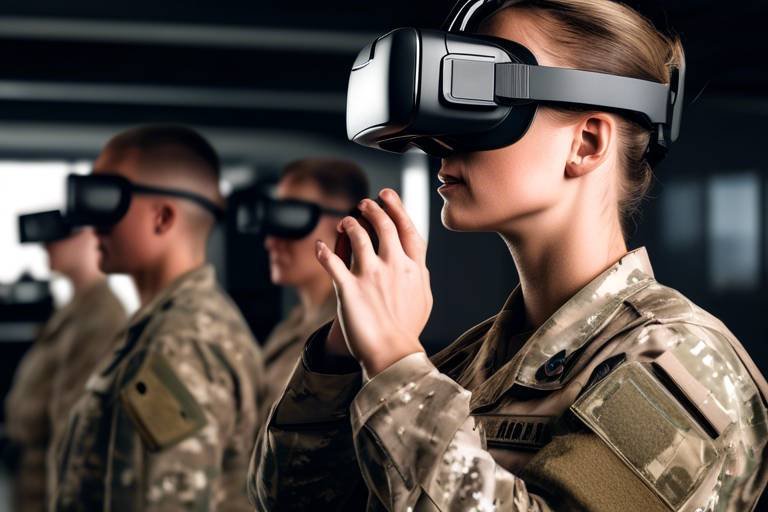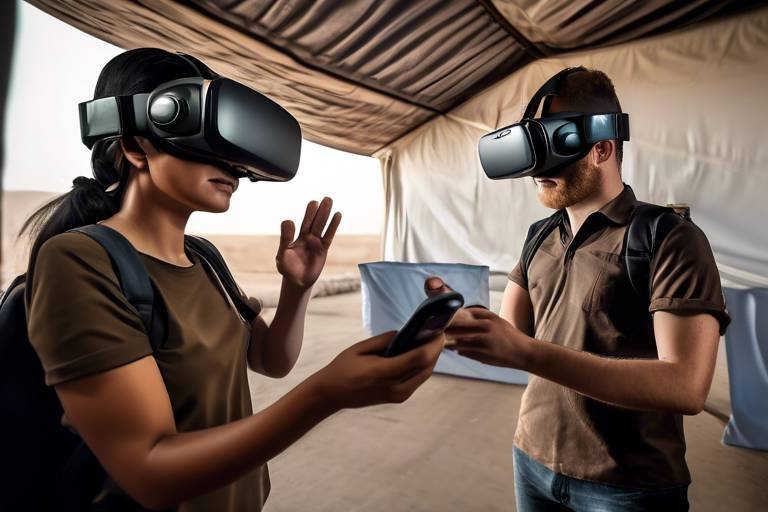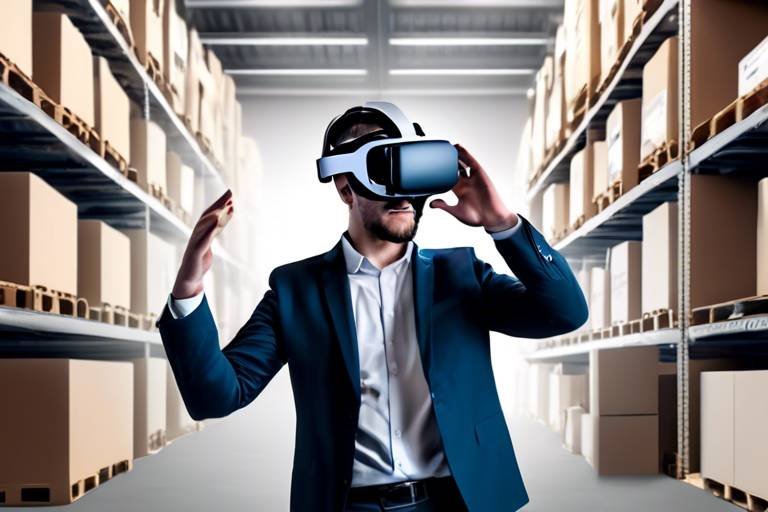Using VR to Train for Chemical, Biological, Radiological, and Nuclear (CBRN) Threats
In an era where technology is rapidly advancing, the need for effective training solutions has never been more critical, especially when it comes to responding to Chemical, Biological, Radiological, and Nuclear (CBRN) threats. These threats pose significant risks to public health and safety, and traditional training methods often fall short in preparing personnel for the real-world complexities of such incidents. Enter Virtual Reality (VR), a game-changing technology that is redefining how we approach CBRN training. By immersing trainees in realistic scenarios, VR not only enhances learning but also boosts retention and decision-making skills, making it an invaluable tool for first responders, military personnel, and emergency management teams.
CBRN threats encompass a range of hazardous materials and situations that can have devastating effects on populations and environments. These threats can arise from various sources, including terrorist attacks, industrial accidents, or natural disasters. Understanding the types of hazards involved—such as toxic chemicals, infectious agents, radioactive materials, and explosive devices—is crucial for effective training. Each category presents unique challenges and requires specialized knowledge and skills. The potential impact of these threats on public health and safety is profound, underscoring the necessity for robust training programs that prepare individuals to respond swiftly and effectively.
Virtual Reality technology is revolutionizing the way we train for CBRN incidents. Unlike traditional training methods that often rely on lectures and simulations that lack realism, VR immerses trainees in lifelike environments where they can practice their skills in a safe yet challenging setting. This immersive experience allows responders to engage with complex scenarios that mimic the chaos and unpredictability of real-life incidents. As they navigate through these virtual landscapes, they develop crucial skills that are difficult to replicate in conventional training. The ability to practice in a controlled environment not only enhances learning but also builds confidence among trainees.
One of the most significant advantages of VR training is the opportunity for immersive learning. Trainees can experience realistic scenarios without the risk of real-world consequences. This fosters better decision-making skills, as they learn to assess situations and react appropriately. For example, a trainee might find themselves in a virtual environment where they must identify a chemical leak and respond accordingly. This hands-on experience is invaluable; it prepares them for the high-stakes decisions they will have to make during actual CBRN incidents.
Another critical benefit of VR training is the enhancement of situational awareness. By simulating complex environments, VR allows trainees to practice identifying threats and making quick, informed decisions in high-pressure situations. Imagine navigating through a virtual city where a biological threat has been detected. Trainees must assess their surroundings, communicate with team members, and implement safety protocols—all while under the pressure of a ticking clock. This kind of training sharpens their ability to remain calm and focused, which is essential during real emergencies.
VR creates a safe space for trainees to engage with hazardous scenarios, allowing them to hone their skills without exposure to real-life dangers. This is particularly important in CBRN training, where the stakes are incredibly high. By practicing in a virtual environment, trainees can make mistakes and learn from them without any risk to themselves or others. This not only enhances their skills but also promotes a culture of safety and preparedness.
One of the standout features of VR is its ability to customize training scenarios. Organizations can tailor their training programs to address specific needs and challenges they face in CBRN preparedness. Whether it's simulating a chemical spill in an industrial setting or a biological outbreak in a crowded urban area, VR can adapt to create realistic scenarios that reflect the unique risks associated with different environments. This level of customization ensures that trainees receive the most relevant training possible, enhancing their readiness for real-world situations.
Several organizations have successfully integrated VR into their CBRN training programs, showcasing the effectiveness of this innovative approach. For instance, military organizations have adopted VR for CBRN training, enhancing readiness and response capabilities through realistic simulations that reflect potential battlefield scenarios. Civilian emergency response teams also utilize VR training to prepare for CBRN incidents, ensuring they are equipped to protect public safety and manage crises effectively.
In the military, VR has been pivotal in preparing personnel for CBRN threats they may encounter in the field. Training programs leverage VR to create immersive environments that simulate battlefield conditions, allowing soldiers to practice their response strategies in a safe yet realistic setting. This not only improves their skills but also builds camaraderie and teamwork, which are essential during actual deployments.
Civilian emergency response teams, including firefighters, paramedics, and disaster response units, have also embraced VR training. By immersing these teams in realistic CBRN scenarios, they can better understand the complexities of managing public safety during crises. This preparation is vital for ensuring that they can respond effectively and efficiently when faced with real threats.
While the benefits of VR training are significant, there are also challenges and limitations to consider. One of the primary concerns is the cost associated with implementing VR technology. The investment required for hardware and software can be substantial, prompting organizations to weigh the costs against the potential benefits in training effectiveness and preparedness.
Organizations must carefully evaluate their budgets when considering VR training. While the initial investment may be high, the long-term benefits in terms of enhanced training outcomes and improved readiness can outweigh these costs. Additionally, as technology advances, the price of VR solutions is likely to decrease, making it more accessible for a wider range of organizations.
Another challenge lies in the current technological limitations of VR. Hardware requirements can be demanding, and not all organizations may have the resources to invest in high-quality VR equipment. Furthermore, the need for realistic simulations is critical to ensure effective training outcomes. Organizations must continually evaluate and improve their VR training programs to keep pace with advancements in technology and training methodologies.
Looking ahead, the future of VR in CBRN training is bright, with emerging trends that promise to enhance realism and accessibility. One exciting possibility is the integration of VR with other technologies, such as augmented reality and artificial intelligence. This convergence could create even more effective training solutions, providing responders with a comprehensive toolkit for managing CBRN threats.
The future may see VR integrated with augmented reality (AR) and artificial intelligence (AI) to create training solutions that are not only more immersive but also more adaptive. For example, AI could analyze a trainee's performance in real-time, offering personalized feedback and adjusting scenarios to better suit their learning needs.
As VR technology evolves, its applications may extend beyond CBRN training. Industries such as healthcare, military, and disaster response could benefit from the immersive learning experiences that VR offers. Imagine a surgeon practicing a complex procedure in a virtual operating room or a disaster response team training for a natural disaster scenario. The possibilities are endless!
1. What are CBRN threats?
CBRN threats refer to hazards associated with chemicals, biological agents, radioactive materials, and nuclear weapons that can pose significant risks to public health and safety.
2. How does VR enhance CBRN training?
VR enhances CBRN training by providing immersive, realistic scenarios that allow trainees to practice their skills in a safe environment, improving their decision-making and situational awareness.
3. What are the challenges of implementing VR training?
Challenges include high initial costs, technological limitations, and the need for ongoing evaluation and improvement of training programs to ensure effectiveness.
4. What is the future of VR in training?
The future of VR in training includes integration with other technologies like AR and AI, as well as broader applications across various fields beyond CBRN.

Understanding CBRN Threats
When we talk about CBRN threats, we're diving into a complex world of potential dangers that can have catastrophic consequences for public health and safety. CBRN stands for Chemical, Biological, Radiological, and Nuclear, and each of these categories encompasses a range of hazards that can arise from various sources, including industrial accidents, terrorist attacks, or even natural disasters. Understanding these threats is crucial for developing effective training and response strategies.
Let’s break it down a bit:
- Chemical Threats: These involve harmful chemicals that can cause injury or death. They can be released accidentally, such as in a chemical plant explosion, or intentionally, as in chemical warfare. The effects can be immediate and devastating, impacting large populations.
- Biological Threats: These include pathogens like viruses and bacteria that can lead to widespread illness or death. Examples include anthrax or smallpox, which can be used as biological weapons. The subtlety of these threats makes them particularly dangerous, as they can spread before detection.
- Radiological Threats: These involve the release of radioactive materials, which can result from accidents at nuclear power plants or from dirty bombs. The long-term health impacts from exposure to radiation can be severe and often go unnoticed until it’s too late.
- Nuclear Threats: These are perhaps the most alarming, involving the use of nuclear weapons or the threat of nuclear terrorism. The potential for mass destruction and long-term environmental damage is immense.
The impact of these threats on public safety cannot be overstated. Each category presents unique challenges that require specialized training and preparedness. For example, the nature of a chemical attack might necessitate a swift evacuation and decontamination process, while a biological threat could require a more prolonged public health response to contain the spread of disease.
Moreover, the psychological impact on the population can be profound. Fear and anxiety can spread just as quickly as any biological agent. This is why effective training programs are essential. They not only prepare responders for the immediate physical challenges but also equip them with the skills to manage public perception and communication during a crisis.
In summary, understanding CBRN threats involves recognizing the various types of hazards, their potential impacts, and the necessity for robust training solutions. As we delve deeper into how virtual reality can enhance this training, it becomes clear that innovative approaches are essential for ensuring the safety of our communities.

The Role of VR in Training
In recent years, virtual reality (VR) has emerged as a game-changer in the realm of training, particularly for Chemical, Biological, Radiological, and Nuclear (CBRN) threats. Traditional training methods often fall short, offering limited engagement and real-world applicability. However, VR technology immerses trainees in lifelike scenarios that not only capture their attention but also enhance their learning experience. Imagine being able to step into a simulated environment where you can encounter a chemical spill or a biological hazard without any real-world consequences. This is the power of VR in training.
One of the most significant advantages of VR is its ability to create immersive experiences. When trainees don VR headsets, they are transported to complex environments that mimic potential CBRN scenarios. This level of immersion allows them to practice their skills in a way that feels real, making it easier to retain information. In fact, studies show that experiential learning through VR can improve retention rates by as much as 75% compared to traditional methods. The brain is wired to remember experiences, and VR taps into that natural learning process.
Moreover, VR training can be tailored to meet the specific needs of different organizations. For instance, a military unit might require training that focuses on battlefield scenarios, while a civilian emergency response team may need to prepare for urban chemical spills. With VR, trainers can customize scenarios based on the unique challenges faced by their teams. This customization ensures that every training session is relevant and effective, allowing personnel to develop the skills they need to respond to real-world threats.
Furthermore, VR provides a safe environment for practice. In traditional training, participants might have to engage with hazardous materials or face dangerous situations, which can lead to accidents or injuries. VR eliminates these risks by allowing trainees to interact with virtual hazards. They can make mistakes, learn from them, and refine their decision-making skills without the fear of real-world repercussions. This safety aspect is crucial, especially when dealing with CBRN threats where the stakes are incredibly high.
In summary, the role of VR in training for CBRN threats cannot be overstated. It transforms the learning experience by providing immersive, customizable, and safe environments for trainees. As technology continues to advance, we can expect VR to play an even more significant role in preparing personnel to tackle these critical challenges effectively.
- What are CBRN threats? CBRN threats refer to hazards that involve chemicals, biological agents, radiological materials, and nuclear weapons, posing significant risks to public health and safety.
- How does VR improve training effectiveness? VR enhances training by providing immersive scenarios that improve retention and decision-making skills, allowing trainees to practice in a realistic yet safe environment.
- Can VR training be customized? Yes, VR training can be tailored to meet the specific needs and challenges of different organizations, ensuring relevant and effective training experiences.
- What are the safety benefits of using VR in training? VR allows trainees to engage with hazardous scenarios without real-world risks, enabling them to learn from mistakes without the threat of injury or accidents.

Benefits of Immersive Learning
Immersive learning through virtual reality (VR) represents a significant leap forward in training methodologies, especially in the context of preparing for chemical, biological, radiological, and nuclear (CBRN) threats. Imagine stepping into a lifelike simulation where every sound, sight, and sensation is designed to mimic real-world scenarios. This level of engagement not only captivates trainees but also enhances their ability to absorb and retain critical information. In essence, immersive learning transforms the training experience into something far more impactful than traditional methods.
One of the primary advantages of immersive learning is the opportunity it provides for trainees to encounter realistic scenarios without the risk of real-world consequences. For instance, during a CBRN training session, personnel can practice their responses to a simulated chemical spill or biological threat. This hands-on experience fosters a deeper understanding of the protocols and procedures they must follow in an actual emergency. As they navigate these scenarios, they develop essential skills such as quick decision-making, effective communication, and teamwork, all of which are vital during high-pressure incidents.
Moreover, immersive learning promotes better decision-making skills. When trainees are placed in a VR environment, they are often faced with unexpected challenges that require them to think on their feet. This dynamic learning process encourages critical thinking and adaptability, qualities that are indispensable in real-life situations where every second counts. By simulating various outcomes based on their choices, trainees can learn from their mistakes in a safe environment, ultimately preparing them for the unpredictability of actual CBRN incidents.
Another significant benefit is the enhanced situational awareness that VR training provides. In a typical CBRN incident, the environment can be chaotic and overwhelming. VR training allows personnel to practice identifying threats and making quick, informed decisions amidst distractions and high-stress conditions. For example, they might be tasked with assessing a scene filled with simulated victims, hazardous materials, and potential secondary threats. This level of realism helps trainees to hone their ability to maintain focus and clarity in the face of confusion.
In addition, VR training creates a safe environment for practice. Unlike traditional training methods that may involve live drills or tabletop exercises, VR allows individuals to engage with hazardous scenarios without any risk of injury or exposure to harmful substances. This safety factor is crucial, especially when training for CBRN threats, where the stakes are incredibly high. Trainees can repeat scenarios as many times as necessary to build confidence and competence, ensuring they are well-prepared for any situation they may encounter in the field.
Finally, the customization of training scenarios in VR is a game-changer. Organizations can tailor their training programs to address specific challenges and needs unique to their operations. Whether it's simulating a biological attack in an urban setting or a radiological incident in a remote area, VR technology allows for a level of specificity that traditional training methods simply cannot match. This adaptability ensures that personnel are not only trained for general situations but are also equipped to handle the unique threats they may face in their respective roles.
In summary, the benefits of immersive learning through VR are profound. From fostering critical decision-making skills to enhancing situational awareness and providing a safe space for practice, VR training is revolutionizing how personnel prepare for CBRN threats. As we continue to explore and develop these technologies, the potential for even more effective training solutions becomes increasingly promising.
- What is immersive learning? Immersive learning is an educational approach that engages learners in realistic, interactive environments, allowing them to practice skills and make decisions in lifelike scenarios.
- How does VR enhance CBRN training? VR enhances CBRN training by providing realistic simulations, improving decision-making, and allowing for repetition in a safe environment.
- Can VR training be customized? Yes, VR training can be tailored to meet specific organizational needs, addressing unique challenges and scenarios faced by different teams.
- What are the safety benefits of VR training? VR training allows personnel to practice hazardous scenarios without the risk of injury or exposure to dangerous substances.

Enhanced Situational Awareness
When it comes to responding to CBRN threats, having a sharp sense of situational awareness can make all the difference. Imagine being in a high-pressure scenario where every second counts; your ability to assess the environment and make quick decisions can be a matter of life and death. This is where virtual reality (VR) shines, providing an immersive training experience that enhances situational awareness like never before.
Through VR simulations, trainees are placed in complex, dynamic environments that mimic real-life CBRN incidents. These scenarios are not just about following a checklist; they require active engagement and critical thinking. For instance, trainees might find themselves navigating a simulated disaster zone where they must identify potential threats, such as hazardous materials or biological agents, while simultaneously managing the safety of civilians. This level of realism helps to cultivate a mindset that is crucial for effective response.
In a traditional training setting, it can be challenging to replicate the chaos and unpredictability of a real-world incident. However, VR allows for the creation of diverse scenarios that can change on the fly based on the trainee's decisions. This adaptability not only keeps the training engaging but also ensures that participants are better prepared for the unexpected. Here are some key aspects of how VR enhances situational awareness:
- Real-Time Feedback: Trainees receive immediate feedback on their actions, allowing them to adjust their strategies and improve their decision-making skills on the spot.
- Multi-Sensory Engagement: By engaging multiple senses, VR helps to create a more immersive experience that reinforces learning and retention.
- Team Dynamics: VR scenarios often involve teamwork, requiring trainees to communicate effectively and coordinate their efforts to manage the situation successfully.
Furthermore, the safe environment provided by VR means that trainees can make mistakes without real-world consequences. This is crucial for learning; after all, how can you truly understand the implications of your decisions if you never face the risk of failure? With VR, individuals can practice identifying threats, assessing risks, and executing safety protocols repeatedly until they feel confident in their abilities.
In summary, enhanced situational awareness through VR training equips personnel with the skills they need to navigate the complexities of CBRN threats effectively. By simulating real-world scenarios and providing a platform for active learning, VR not only prepares responders to act decisively but also fosters a culture of safety and preparedness that extends beyond the training room. As we continue to explore the capabilities of VR, the potential for improved situational awareness in CBRN response will only grow, paving the way for safer, more effective operations in the field.
- What is CBRN training? CBRN training prepares personnel to respond to chemical, biological, radiological, and nuclear threats effectively.
- How does VR improve training outcomes? VR provides immersive, realistic scenarios that enhance learning, retention, and decision-making skills.
- Are there any safety concerns with VR training? VR training creates a safe environment for practice, minimizing real-world risks while maximizing learning opportunities.

Safe Environment for Practice
One of the most compelling advantages of using Virtual Reality (VR) in training for Chemical, Biological, Radiological, and Nuclear (CBRN) threats is the creation of a safe environment for practice. Traditional training methods often involve real-world simulations that can pose risks to trainees, especially when dealing with hazardous materials or situations. However, VR technology allows personnel to engage in realistic scenarios without the associated dangers. Imagine being able to walk through a contaminated area or respond to a biological threat without ever stepping foot outside of a controlled environment. This not only enhances safety but also boosts confidence among trainees.
In a VR training session, participants can practice their skills repeatedly, refining their responses to various CBRN incidents. The ability to repeat scenarios in a risk-free setting enables trainees to learn from their mistakes without the fear of real-world consequences. For instance, if a trainee misidentifies a threat or fails to follow proper protocols, they can immediately reset the scenario and try again. This iterative process fosters a deeper understanding of the protocols necessary to respond effectively in actual emergencies.
Moreover, VR training can simulate a wide range of environments and situations, from urban settings to industrial sites, ensuring that personnel are well-prepared for any circumstance they may encounter. The flexibility of VR allows trainers to customize scenarios based on the specific threats relevant to their organization, ensuring that every training session is tailored to the unique challenges faced by the team. This level of customization is crucial in a field where the stakes are incredibly high, and the consequences of inaction can be dire.
In summary, the safe environment provided by VR training not only enhances the learning experience but also significantly contributes to the overall preparedness of CBRN response teams. By allowing personnel to practice in a controlled, immersive setting, organizations can ensure that their teams are ready to tackle real-world threats with confidence and skill.
- What is CBRN training? CBRN training prepares personnel to respond to chemical, biological, radiological, and nuclear threats effectively.
- How does VR improve CBRN training? VR offers immersive experiences that replicate real-life scenarios without the associated risks, enhancing learning and decision-making skills.
- Are there any risks associated with VR training? While VR minimizes real-world risks, it is essential to ensure that the technology is used correctly and that trainees are adequately prepared for the transition to real-life situations.
- Can VR training be customized? Yes, VR training scenarios can be tailored to meet the specific needs and challenges of different organizations, making it a versatile training tool.
- What are the future trends in VR for CBRN training? Emerging trends include integration with augmented reality and artificial intelligence, which will further enhance the realism and effectiveness of training programs.

Customization of Training Scenarios
One of the most exciting aspects of using virtual reality (VR) in training for Chemical, Biological, Radiological, and Nuclear (CBRN) threats is the ability to customize training scenarios to meet the unique needs of different organizations. Imagine training in a world where the scenarios are tailored specifically to the challenges your team faces. This level of customization allows for a more relevant and impactful training experience, making it not just a simulation, but a true preparation for real-world situations.
Organizations can create a wide array of scenarios that reflect their specific operational environments. For instance, a military unit might need to simulate a battlefield contaminated with chemical agents, while a civilian emergency response team could focus on urban environments affected by biological threats. The flexibility of VR technology enables trainers to modify elements such as:
- Environmental Conditions: Simulating various weather conditions, times of day, or urban versus rural settings.
- Threat Types: Incorporating different types of CBRN agents, from nerve agents to radioactive materials.
- Response Protocols: Allowing teams to practice specific response strategies tailored to their operational guidelines.
This customization not only enhances the realism of the training but also increases engagement among trainees. When individuals see scenarios that resonate with their actual duties, they are more likely to feel invested in the training process. The immersive nature of VR means that trainees can practice decision-making in high-stakes situations without the fear of real-world consequences. This safe environment fosters a deeper understanding of their roles and responsibilities during a CBRN incident.
Furthermore, the ability to iterate and update scenarios based on feedback and evolving threats is a game-changer. As new threats emerge, organizations can quickly adapt their training programs to include these challenges, ensuring that their personnel are always prepared for the unexpected. In this way, VR not only serves as a training tool but also as a dynamic platform for continuous learning and improvement.
In summary, the customization of training scenarios in VR provides a tailored approach to CBRN readiness. By creating specific, relevant, and adaptable training experiences, organizations can significantly enhance their preparedness and response capabilities, ultimately protecting public safety and saving lives.
Q: How does VR training compare to traditional methods?
A: VR training offers immersive experiences that traditional methods cannot match, allowing for realistic practice in a safe environment.
Q: Can VR training be tailored for different organizations?
A: Yes, VR training can be customized to meet the specific needs and challenges of various organizations, enhancing relevance and effectiveness.
Q: What are the costs associated with implementing VR training?
A: While initial investments in VR technology can be significant, the long-term benefits in training effectiveness and preparedness often outweigh these costs.
Q: Are there limitations to VR training?
A: Yes, there are technological limitations and the need for ongoing evaluation to ensure that VR simulations remain realistic and effective.

Case Studies of VR Implementation
The adoption of Virtual Reality (VR) in training for Chemical, Biological, Radiological, and Nuclear (CBRN) threats has proven to be a game-changer across various sectors. By looking at real-world examples, we can grasp how organizations are leveraging this technology to enhance their preparedness and response capabilities. One notable case is the implementation of VR training within military organizations. These forces have integrated VR simulations that replicate potential battlefield scenarios involving CBRN threats, allowing personnel to practice their skills in a controlled, yet realistic environment. This approach has significantly improved their readiness, as it provides soldiers with the opportunity to experience high-stakes situations without the associated risks.
In addition to military applications, civilian emergency response teams have also begun utilizing VR for CBRN training. For instance, a fire department in a major metropolitan area adopted VR simulations to prepare their personnel for hazardous material incidents. The training included scenarios such as chemical spills and biological threats, where responders could practice their roles in a safe environment. The results were impressive: trainees reported feeling more confident and better prepared to handle real-life emergencies. This kind of immersive training not only enhances skills but also fosters teamwork and communication among team members, which are crucial during actual crises.
Another compelling example comes from a healthcare organization that integrated VR into its training protocols for dealing with biological threats. By simulating outbreaks of infectious diseases, healthcare workers were able to practice their response strategies in a virtual setting. This not only improved their procedural knowledge but also highlighted the importance of rapid decision-making in life-or-death situations. The feedback from participants indicated that they felt more equipped to handle such emergencies, ultimately leading to better patient outcomes during real incidents.
To illustrate the effectiveness of these implementations, we can look at a comparative analysis of training outcomes before and after the introduction of VR in these organizations. The following table summarizes key metrics:
| Organization Type | Training Method Before VR | Training Method After VR | Improvement in Preparedness |
|---|---|---|---|
| Military | Classroom-based drills | Immersive VR simulations | 40% increase |
| Civilian Emergency Response | Tabletop exercises | Hands-on VR training | 50% increase |
| Healthcare | Standardized training sessions | VR outbreak simulations | 30% increase |
These case studies highlight the transformative power of VR technology in CBRN training. By providing realistic, immersive experiences, organizations can better prepare their personnel for the complexities and challenges of real-world threats. As more organizations recognize the benefits of VR, we can expect to see continued innovation and integration of this technology into training programs, ultimately leading to enhanced safety and effectiveness in CBRN response.
- What are CBRN threats? CBRN threats refer to hazards associated with chemical, biological, radiological, and nuclear materials that can pose significant risks to public health and safety.
- How does VR training differ from traditional training methods? VR training offers immersive, realistic scenarios that allow trainees to practice decision-making and skills in a safe environment, unlike traditional methods that may rely on theoretical knowledge.
- What are the benefits of using VR for CBRN training? Benefits include enhanced situational awareness, improved decision-making skills, and the ability to practice in hazardous scenarios without real-world consequences.
- Are there any limitations to VR training? Yes, challenges include high costs, technological limitations, and the need for ongoing evaluation to ensure training effectiveness.

Military Applications
The military has always been at the forefront of adopting new technologies to enhance readiness and effectiveness, and virtual reality (VR) is no exception. With the increasing complexity of modern warfare and the potential for chemical, biological, radiological, and nuclear (CBRN) threats, military organizations are leveraging VR to create realistic training environments that prepare personnel for real-world challenges. Imagine soldiers immersed in a lifelike simulation, navigating through a hazardous environment where they must identify and neutralize threats. This kind of training not only sharpens their skills but also builds confidence, allowing them to make quick, informed decisions under pressure.
One of the most significant advantages of VR in military applications is the ability to replicate dangerous scenarios without the associated risks. For instance, soldiers can practice responding to a simulated chemical attack, learning how to don protective gear, assess the situation, and execute a response plan—all without ever leaving the safety of a training facility. This safe environment encourages experimentation and learning from mistakes, which is crucial in high-stakes situations where lives are on the line.
Additionally, VR training can be tailored to reflect specific battlefield scenarios. Military trainers can customize simulations to mimic the geographical and environmental conditions of potential conflict zones, ensuring that troops are adequately prepared for the unique challenges they may face. This customization extends to the types of threats encountered, allowing for a more comprehensive training experience. For example, a VR scenario might include:
- Simulated CBRN attacks in urban settings
- Response to biological threats in populated areas
- Radiological incidents during combat operations
Moreover, the use of VR in military training is not limited to individual soldiers. Entire units can engage in collaborative training exercises, working together in a virtual space to develop teamwork and communication skills essential for effective CBRN response. This aspect of training fosters a sense of camaraderie and prepares units to operate seamlessly in real-world situations.
As we look to the future, the integration of VR with other technologies, such as augmented reality (AR) and artificial intelligence (AI), promises to further enhance military training programs. By combining these technologies, military organizations can create even more immersive and adaptive training environments. For example, AI could analyze a trainee's performance in real-time, providing instant feedback and adjusting the difficulty of scenarios to match their skill level.
In summary, the military's adoption of VR technology for CBRN training not only enhances preparedness but also revolutionizes the way personnel are trained to handle complex and dangerous situations. By providing a safe, customizable, and immersive training experience, VR is setting a new standard in military readiness.
- What are CBRN threats? CBRN threats refer to hazards that involve chemical, biological, radiological, and nuclear materials, posing significant risks to public health and safety.
- How does VR improve military training? VR allows for realistic simulations that enhance decision-making skills, situational awareness, and teamwork without exposing personnel to real dangers.
- Can VR training be customized? Yes, VR training scenarios can be tailored to reflect specific environments, threats, and challenges faced by military organizations.
- What is the future of VR in military training? The future may see the integration of VR with AR and AI, creating even more effective and immersive training solutions.
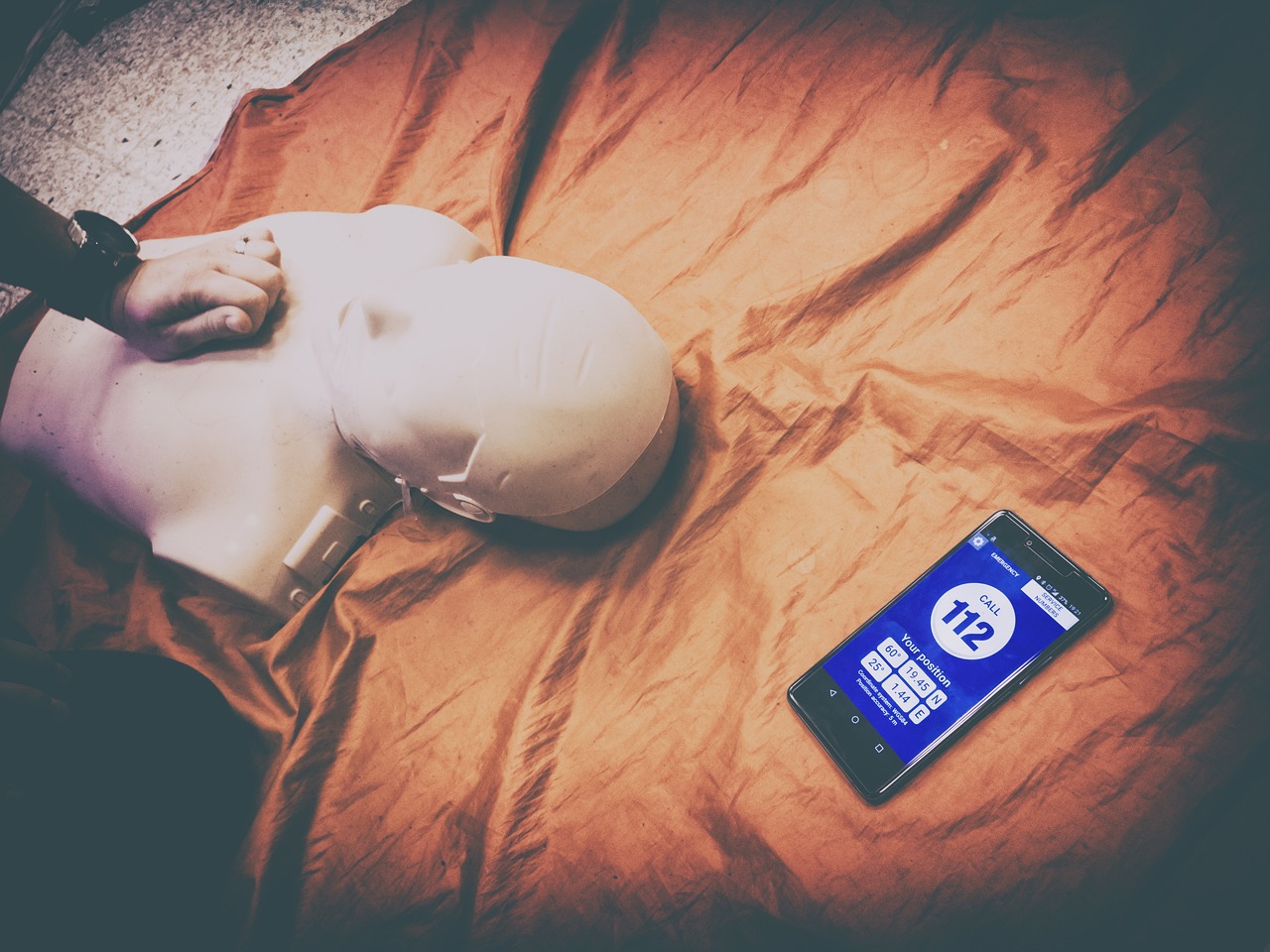
Civilian Emergency Response
In today's world, where the threat of chemical, biological, radiological, and nuclear (CBRN) incidents looms large, the role of civilian emergency response teams has never been more critical. These teams are the frontline heroes, trained to protect public safety and manage crises effectively. With the advent of virtual reality (VR) technology, their training has undergone a revolutionary transformation. Imagine stepping into a lifelike simulation where you can practice responding to a hazardous materials spill or a biological attack without any real-world consequences. This is the power of VR in civilian emergency response training.
Through immersive VR experiences, responders can encounter various CBRN scenarios that challenge their skills and decision-making abilities. For instance, they can simulate a chemical leak in a crowded urban area, allowing them to practice evacuation procedures, hazard assessment, and communication with other emergency services. This kind of training not only prepares them for real-life incidents but also boosts their confidence, enabling them to act swiftly and effectively when the situation demands it.
Moreover, VR training can be tailored to meet the specific needs of different organizations. Whether it's a small town fire department or a large metropolitan emergency management agency, VR can create customizable training modules that address unique challenges faced by each team. This flexibility ensures that all responders, regardless of their experience level, can benefit from targeted training that enhances their preparedness for CBRN threats.
One of the standout features of VR training is its ability to foster team collaboration. In a real CBRN incident, effective communication and teamwork are paramount. VR simulations can be designed to include multiple responders, allowing teams to practice working together in high-pressure environments. This collaborative aspect not only improves individual skills but also strengthens the overall cohesion of the response team.
As we look to the future, the integration of VR technology in civilian emergency response training is set to expand even further. With advancements in realism and accessibility, more organizations will be able to implement VR solutions, ensuring that their teams are not just trained, but truly prepared for the complexities of CBRN incidents.
- What is VR training for civilian emergency responders?
VR training immerses responders in realistic simulations of CBRN incidents, enhancing their decision-making skills and preparedness. - How does VR improve team collaboration?
VR allows multiple responders to train together, fostering communication and teamwork essential for effective crisis management. - Can VR training be customized?
Yes, VR training programs can be tailored to address the specific needs and challenges of different emergency response organizations. - What are the benefits of using VR in training?
Benefits include increased realism, improved retention of information, and the ability to practice without real-world risks.

Challenges and Limitations of VR Training
While the adoption of virtual reality (VR) in training for Chemical, Biological, Radiological, and Nuclear (CBRN) threats presents numerous advantages, it is essential to acknowledge the challenges and limitations that come with this innovative approach. One of the primary concerns revolves around the cost considerations. Implementing VR technology can require a significant financial investment. Organizations must evaluate whether the potential benefits in terms of training effectiveness and preparedness justify these costs. This often leads to a tough decision-making process, particularly for smaller organizations or those with limited budgets.
Additionally, there are technological limitations that can hinder the effectiveness of VR training. For instance, the hardware requirements for VR can be demanding. High-quality simulations necessitate powerful computers and specialized equipment, which may not be readily available to all organizations. Moreover, the realism of the simulations is crucial for effective training outcomes. If the VR environment does not accurately replicate real-world scenarios, trainees may not fully engage or learn the necessary skills to respond effectively to CBRN threats.
Another challenge is the need for ongoing evaluation and improvement. As with any training program, it is vital to continuously assess the effectiveness of VR training modules. This involves gathering feedback from trainees and instructors, analyzing performance metrics, and making necessary adjustments to improve the training experience. However, this process can be resource-intensive and may require dedicated personnel to manage.
Despite these challenges, the potential of VR in CBRN training remains significant. By addressing the limitations and investing in the necessary technology and evaluation processes, organizations can harness the full power of VR to enhance their preparedness for CBRN threats.
- What are the main benefits of using VR for CBRN training?
VR offers immersive experiences that enhance learning retention, improve situational awareness, and provide a safe environment for practicing skills. - How does VR training compare to traditional training methods?
VR training allows for realistic simulations without real-world consequences, making it more effective in preparing personnel for high-pressure situations. - What are the costs associated with implementing VR training?
The costs can vary significantly depending on the technology used, the complexity of the training scenarios, and the need for ongoing maintenance and updates. - Are there any limitations to VR training?
Yes, challenges include technological barriers, the need for realistic simulations, and the requirement for ongoing evaluation and improvement of training programs. - What is the future of VR in CBRN training?
The future may see VR integrated with other technologies, enhancing its effectiveness and expanding its applications beyond CBRN training.
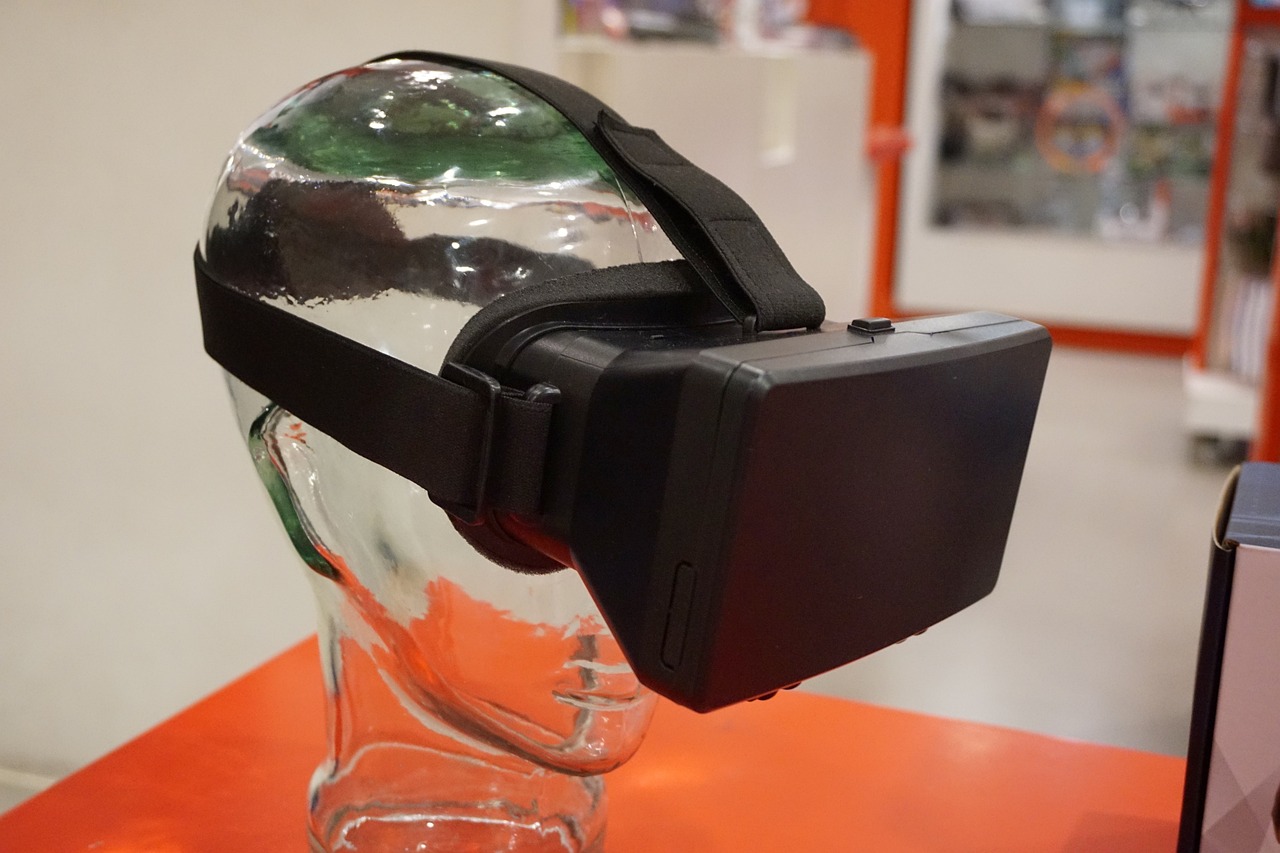
Cost Considerations
When it comes to implementing Virtual Reality (VR) training for Chemical, Biological, Radiological, and Nuclear (CBRN) threats, one of the most pressing issues organizations face is the cost. The financial investment required for VR technology can be substantial, leading many to ponder if the benefits truly outweigh the expenses. But let's break this down a bit.
First off, consider the initial costs associated with VR hardware and software. High-quality VR headsets and the necessary computing power can run into thousands of dollars. Not to mention the costs of developing customized training scenarios tailored to specific organizational needs. This can lead to a significant upfront investment, which might make some organizations hesitant to jump on the VR bandwagon.
However, when evaluating costs, organizations should also factor in the long-term benefits of VR training. For instance, traditional training methods often require extensive resources, including time, personnel, and materials. In contrast, VR can drastically reduce the need for physical resources, as simulations can be repeated as often as necessary without additional costs. Think of it like a video game: once you've purchased it, you can play it as many times as you want without incurring further expenses.
Moreover, VR training can lead to better preparedness and reduced risks during real CBRN incidents. By investing in VR, organizations may ultimately save on costs related to incident response and damage control. The potential for fewer mistakes in high-pressure situations can translate into significant savings, not to mention the invaluable peace of mind that comes from knowing your team is well-prepared.
To illustrate the financial impact, let's look at a simple comparison:
| Training Method | Initial Costs | Ongoing Costs | Long-term Benefits |
|---|---|---|---|
| Traditional Training | High (varies) | Moderate (materials, personnel) | Variable (depends on effectiveness) |
| VR Training | High (hardware, software) | Low (minimal materials) | High (improved preparedness, reduced risk) |
As you can see, while the initial costs of VR training might be higher, the ongoing costs are significantly lower, and the long-term benefits could far outweigh the initial investment. This leads to the question: is it worth it? For many organizations, the answer is a resounding yes. The ability to train personnel in a realistic, immersive environment prepares them better for real-world incidents, ultimately protecting both lives and resources.
In conclusion, while the cost considerations for implementing VR training for CBRN threats are significant, the potential for enhanced training effectiveness and safety can justify the investment. By carefully weighing the initial costs against the long-term benefits, organizations can make informed decisions that bolster their preparedness for CBRN incidents.
- What is the average cost of VR training for CBRN? The costs can vary widely depending on the hardware, software, and customization needs, but organizations should expect to invest several thousand dollars initially.
- Are there any ongoing costs associated with VR training? Yes, while ongoing costs are generally lower than traditional methods, there may be expenses related to software updates and scenario development.
- How does VR training improve preparedness? VR training provides immersive, realistic scenarios that enhance decision-making skills and situational awareness, leading to better preparedness for actual incidents.
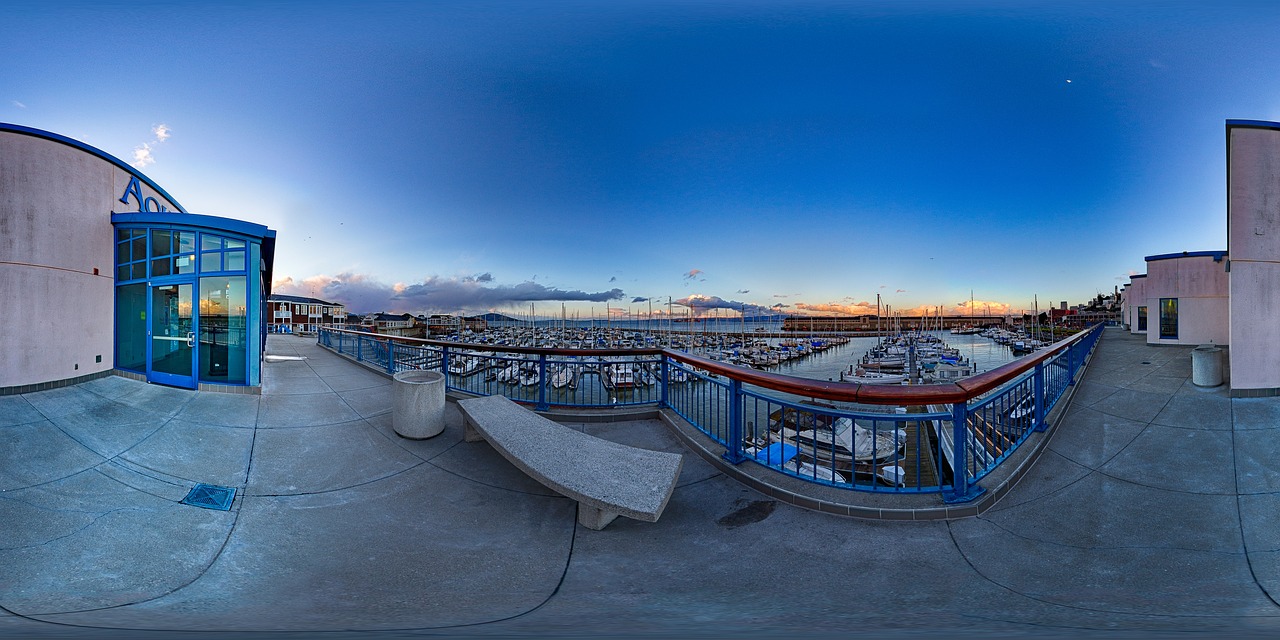
Technological Limitations
While the adoption of virtual reality (VR) in training for Chemical, Biological, Radiological, and Nuclear (CBRN) threats offers exciting possibilities, it is essential to recognize the that can impact its effectiveness. One significant hurdle is the hardware requirements necessary for immersive VR experiences. High-quality VR systems demand powerful computers, specialized headsets, and sometimes additional accessories, which can be a substantial investment for many organizations.
Moreover, the realism of simulations plays a crucial role in the training's effectiveness. If the VR environment does not accurately replicate real-world scenarios, trainees may struggle to transfer their skills to actual incidents. This realism includes not just visual fidelity but also the behavior of virtual elements, such as how hazardous materials react or how environments change in response to various actions. Without these elements, the training may fall short of its objectives.
In addition to hardware and realism, there are also concerns about user experience. If the VR system is complicated or causes discomfort, such as motion sickness, users may become disengaged or frustrated. This leads to a critical question: how can organizations ensure that their personnel remain engaged and focused during training sessions? The answer lies in continuous feedback and iterative design, but this requires ongoing investment and commitment.
Furthermore, there is a need for ongoing evaluation of VR training programs. Organizations must regularly assess the effectiveness of the training provided and make necessary adjustments based on user feedback and changing CBRN threats. This evaluation process can be resource-intensive and may require expertise that some organizations lack.
Lastly, as VR technology continues to evolve, organizations must stay abreast of the latest advancements. This means not only investing in new hardware and software but also ensuring that training content remains relevant. The challenge lies in balancing the costs of technology upgrades with the potential benefits of enhanced training outcomes.
| Technological Limitations | Description |
|---|---|
| Hardware Requirements | Powerful computers and specialized equipment needed for high-quality VR experiences. |
| Realism of Simulations | Importance of accurately replicating real-world scenarios for effective training. |
| User Experience | Potential discomfort or disengagement due to complex systems or motion sickness. |
| Ongoing Evaluation | Need for regular assessment and adjustments based on feedback and threats. |
| Cost of Upgrades | Balancing investment in technology with the benefits of improved training. |

Future Trends in VR for CBRN Training
The landscape of Virtual Reality (VR) training for Chemical, Biological, Radiological, and Nuclear (CBRN) threats is rapidly evolving. As technology advances, we can expect to see a multitude of exciting trends that will significantly enhance the effectiveness and accessibility of training programs. One of the most promising developments is the integration of VR with other cutting-edge technologies, such as Augmented Reality (AR) and Artificial Intelligence (AI). This combination could create a more immersive and interactive training environment, offering trainees the ability to experience a wider range of scenarios in real-time, thereby improving their decision-making skills under pressure.
For instance, imagine a training session where a participant wears a VR headset that not only immerses them in a simulated environment but also overlays critical information using AR. This could include data about potential threats, environmental conditions, and recommended actions, all while adapting to the trainee's performance in real-time thanks to AI algorithms. Such advancements could lead to a more personalized training experience, allowing each individual to learn at their own pace while still being challenged appropriately.
Moreover, as VR technology becomes more affordable and user-friendly, its applications will likely extend beyond the realm of CBRN training. We may see VR being utilized in various fields such as healthcare, military operations, and disaster response. For example, medical professionals could use VR simulations to practice emergency response procedures for chemical spills, enhancing their readiness for real-life scenarios. This cross-industry application not only broadens the scope of VR training but also fosters collaboration between sectors, leading to shared knowledge and improved preparedness.
Another trend to watch for is the increasing focus on realism in simulations. As VR hardware improves, we can expect more lifelike environments and scenarios that closely mimic real-world conditions. This heightened realism will be crucial for effective training, as it allows trainees to engage with situations they might actually encounter in the field. The more realistic the training, the better prepared the personnel will be when facing actual CBRN incidents.
In addition to realism, there will likely be a push for greater accessibility in VR training solutions. As organizations recognize the importance of preparing their teams for CBRN threats, there will be an increased demand for training programs that can be easily deployed and accessed, regardless of location. This could lead to the development of cloud-based VR training platforms that allow users to participate in simulations from anywhere, breaking down geographical barriers and making training more inclusive.
As we look to the future, it’s clear that the potential for VR in CBRN training is immense. With ongoing advancements in technology and a growing understanding of its applications, we can anticipate a new era of training that not only enhances skills and preparedness but also saves lives. The integration of VR with other technologies, the focus on realism, and the drive for accessibility will shape the future of CBRN training, ensuring that personnel are ready to respond effectively to any threat they may face.
- What is VR training for CBRN threats?
VR training for CBRN threats involves using virtual reality technology to simulate hazardous scenarios, allowing personnel to practice their response without real-world risks. - How does VR improve training outcomes?
VR enhances training outcomes by providing immersive experiences that improve retention, decision-making skills, and situational awareness in high-pressure environments. - Are there any limitations to VR training?
Yes, limitations include the cost of technology and the need for ongoing evaluation to ensure training remains relevant and effective. - What future trends can we expect in VR training?
Future trends may include the integration of VR with AR and AI, increased realism in simulations, and greater accessibility through cloud-based platforms.

Integration with Other Technologies
The future of training for Chemical, Biological, Radiological, and Nuclear (CBRN) threats is set to become even more exciting with the integration of virtual reality (VR) with other cutting-edge technologies. Imagine a training environment where VR is not just a standalone tool, but a part of a larger ecosystem that includes augmented reality (AR), artificial intelligence (AI), and even machine learning (ML). This convergence can create an unprecedented level of realism and interactivity, enhancing the overall training experience for personnel.
For instance, consider a scenario where VR training modules are enhanced by AI algorithms that analyze a trainee's performance in real-time. This could allow for personalized feedback and tailored scenarios, adjusting the difficulty level based on the trainee's skill set. Moreover, when combined with AR, trainees could receive real-time information overlays during their immersive experience, providing context-sensitive data that can aid decision-making in critical situations.
Furthermore, the synergy between these technologies can lead to more effective simulations. For example, utilizing AI to simulate unpredictable variables during a CBRN incident can train individuals to adapt quickly and efficiently. This integration not only prepares responders for known threats but also equips them with the skills to handle unexpected challenges, which is crucial in real-world scenarios where uncertainty is the only certainty.
To illustrate the potential of this integration, here’s a simple table that outlines how different technologies can enhance VR training for CBRN threats:
| Technology | Integration Benefits |
|---|---|
| Augmented Reality (AR) | Provides real-time data overlays, improving situational awareness. |
| Artificial Intelligence (AI) | Offers personalized feedback and adjusts scenarios based on trainee performance. |
| Machine Learning (ML) | Analyzes training data to predict outcomes and optimize future training sessions. |
As we look to the future, the possibilities seem endless. The integration of these technologies not only promises to enhance the realism of CBRN training but also aims to make it more accessible. With advancements in hardware and software, we can expect to see training solutions that are not only effective but also user-friendly. This means that organizations, regardless of their size or budget, can benefit from state-of-the-art training tools designed to protect public safety.
In conclusion, the integration of VR with other technologies represents a significant leap forward in preparing personnel to respond to CBRN threats. By creating a more immersive and interactive training environment, we can enhance learning outcomes and ultimately save lives.
- What is VR training for CBRN threats? VR training simulates real-life CBRN scenarios, allowing personnel to practice their response skills in a safe environment.
- How does integration with other technologies enhance VR training? It provides personalized feedback, real-time data, and adaptive learning experiences, making training more effective.
- Are there any limitations to VR training? Yes, challenges include technological costs and the need for ongoing evaluation to ensure effective training outcomes.

Broader Applications Beyond CBRN
The potential of virtual reality (VR) extends far beyond the realm of Chemical, Biological, Radiological, and Nuclear (CBRN) training. As this technology continues to evolve, its applications are becoming increasingly diverse, touching various fields that can benefit from immersive learning experiences. For instance, in the healthcare sector, VR is being used to train medical professionals in surgical procedures, allowing them to practice complex operations in a risk-free environment. Imagine a surgeon performing a delicate procedure on a virtual patient, gaining invaluable experience without any real-world consequences. This not only enhances their skills but also boosts their confidence when facing actual patients.
Similarly, the military has recognized the advantages of VR training for a wide array of scenarios beyond CBRN threats. From combat simulations to strategic planning exercises, VR provides soldiers with realistic environments that prepare them for the unpredictability of warfare. In fact, many military bases have integrated VR into their training regimens, resulting in improved readiness and effectiveness on the battlefield.
Furthermore, disaster response teams are leveraging VR to rehearse their responses to natural disasters, such as earthquakes, floods, or hurricanes. By simulating these emergencies, responders can practice their coordination and decision-making skills, ensuring they are well-prepared to protect communities when disaster strikes. The ability to visualize and navigate chaotic situations in a controlled setting fosters a sense of preparedness that is difficult to achieve through traditional training methods.
As we look to the future, the integration of VR with other technologies, such as augmented reality (AR) and artificial intelligence (AI), promises to enhance the learning experience even further. For example, combining VR with AI could lead to adaptive training scenarios that respond to the learner’s actions, providing personalized feedback and challenges tailored to their skill level. This could revolutionize how we approach training in various fields, making it more engaging and effective.
In summary, the applications of VR are not limited to CBRN training alone. Its ability to create immersive, realistic experiences makes it a powerful tool in healthcare, military training, disaster response, and even education. As technology continues to advance, the possibilities for VR are virtually limitless, paving the way for innovative training solutions across multiple sectors.
- What is virtual reality (VR)? VR is a simulated experience that can be similar to or completely different from the real world, often achieved through the use of headsets and other sensory equipment.
- How is VR used in CBRN training? VR provides immersive environments where trainees can practice responding to CBRN threats without the risks associated with real-life scenarios.
- What are the benefits of VR training? Benefits include enhanced situational awareness, safe practice environments, and the ability to customize scenarios to meet specific training needs.
- Can VR be used in other fields? Yes, VR is being applied in healthcare, military training, disaster response, and education, among others.
- What does the future hold for VR technology? Future trends include integration with AI and AR, making training more adaptive and personalized.
Frequently Asked Questions
- What are CBRN threats?
CBRN threats refer to Chemical, Biological, Radiological, and Nuclear hazards that can pose significant risks to public health and safety. These threats can arise from various sources, including terrorist attacks, industrial accidents, or natural disasters, making effective training essential for preparedness and response.
- How does VR enhance CBRN training?
Virtual Reality (VR) enhances CBRN training by providing immersive simulations that allow trainees to practice in realistic environments without real-world consequences. This technology fosters better decision-making skills and situational awareness, crucial for effective responses during actual CBRN incidents.
- What are the benefits of immersive learning through VR?
Immersive learning through VR offers numerous benefits, such as improved retention of information, the ability to experience high-pressure scenarios safely, and the opportunity to make mistakes in a controlled environment. This hands-on approach significantly boosts confidence and preparedness when facing real threats.
- Can VR training be customized for specific needs?
Absolutely! One of the significant advantages of VR training is its ability to customize scenarios based on the unique challenges and requirements of different organizations. This tailored approach ensures that training is relevant and effective for the specific CBRN threats that responders may encounter.
- What are some challenges associated with VR training?
While VR training is innovative, it does come with challenges such as high initial costs, the need for advanced technology, and potential limitations in realism. Organizations must weigh these factors against the long-term benefits of improved training outcomes and preparedness to determine if VR is the right fit.
- How is VR being used in military applications?
Military organizations are increasingly adopting VR for CBRN training to enhance readiness and response capabilities. By simulating battlefield scenarios that involve CBRN threats, personnel can practice their skills in a safe yet realistic setting, preparing them for potential real-world situations.
- What future trends can we expect in VR for CBRN training?
The future of VR in CBRN training looks promising, with trends pointing towards greater integration with technologies like augmented reality and artificial intelligence. These advancements are expected to create even more effective training solutions, broadening the applications of VR beyond just CBRN to fields like healthcare and disaster response.







